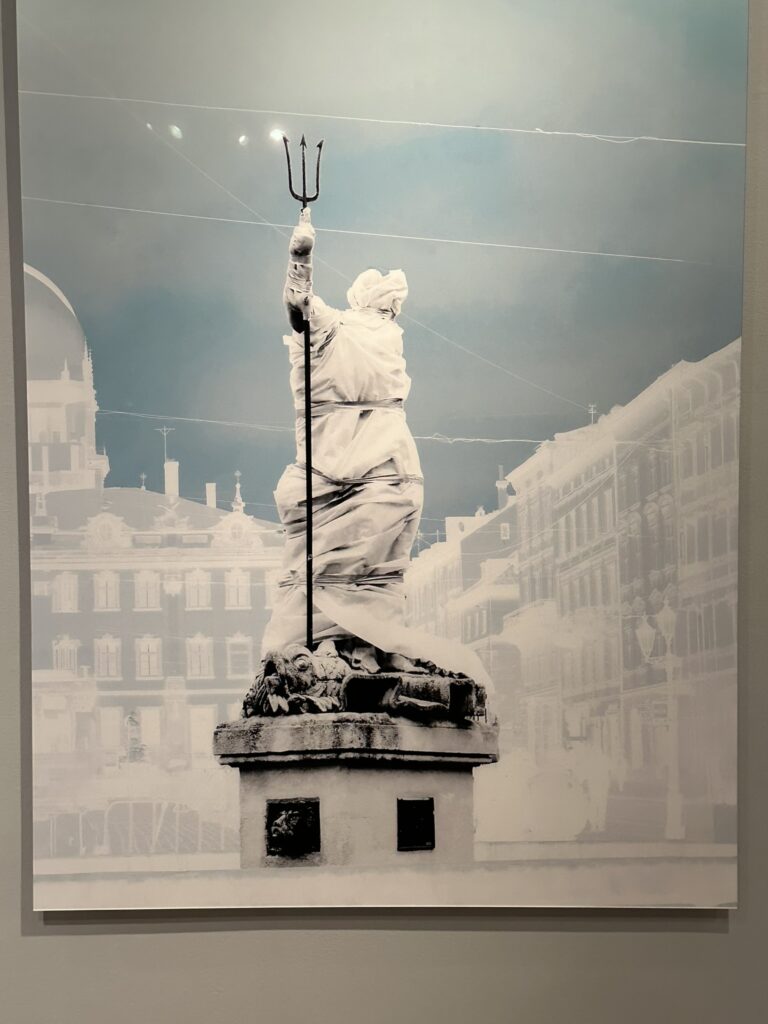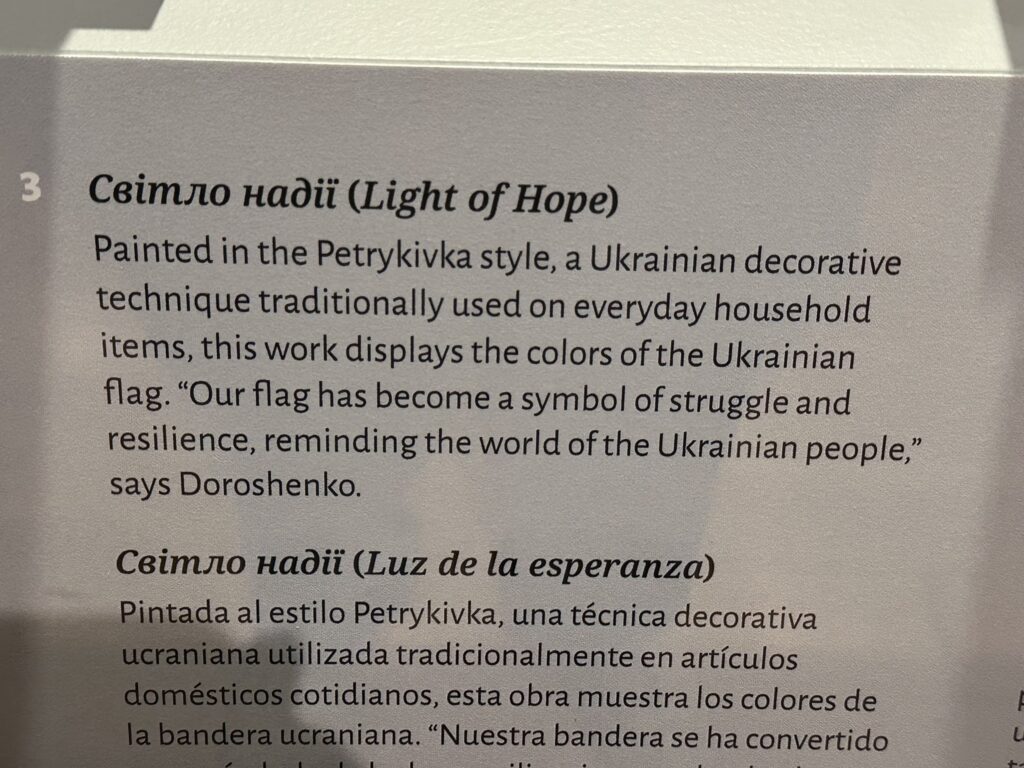Amidst Cries from the Rubble, and exhibition of Ukrainian art since the most recent Russian invasion, at the Museum of International Folk Art, Santa Fe, New Mexico. Oct 2, 2024



from underneath deep, fresh snow an outline of the city has emerged: a city we know and love. a city where we plan on living in the future. The Ukrainian flag flutters above the city. From Sky Above Kharkiv by Serhiy Zhadan.

P is for Pysanki. Colourful Easter eggs, although the custom predates Christianity. In one legend, there was a powerful monster in the Carpathian mountains. The more pysanki the people made, the more tightly the monster was bound, keeping it from destroying the world.

“Instead of saying his first word, our baby makes air-raid siren sounds. Exactly- note for note. From quiet to loud. quiet again, and again to loud. After the war I’ll enroll him in music school. I can already hear-he’s got talent.” Olena Stiazhkina

No one knows where and when the power to be a human is being born. Now it turns out that it is born from everything. Olena Stiazhkina


Pysanki made by my grandmother.

In this fascinating totalitarian badminton match between politics and culture there is neither room for nor the possibility of a Ukrainian culture that is different from and independent of the culture of the metropole. Andriy Bondar


When Kalibr and Iskander missiles shoot out of a clear sky onto residential areas, people seldom have time to pick which poem to read. Oleksandr Boichenko.








Culture in war is not only about war. Life goes on. It is multifaceted, though it is divided into many pieces, like a pomegranate. There are those at the front and those who are far away. There are the itinerant and there are those who are far away. It is almost impossible to put a pomegranate back together. Taras Prokhasko.

You can cut all the flowers, but you can’t stop the spring from coming. Pablo Neruda